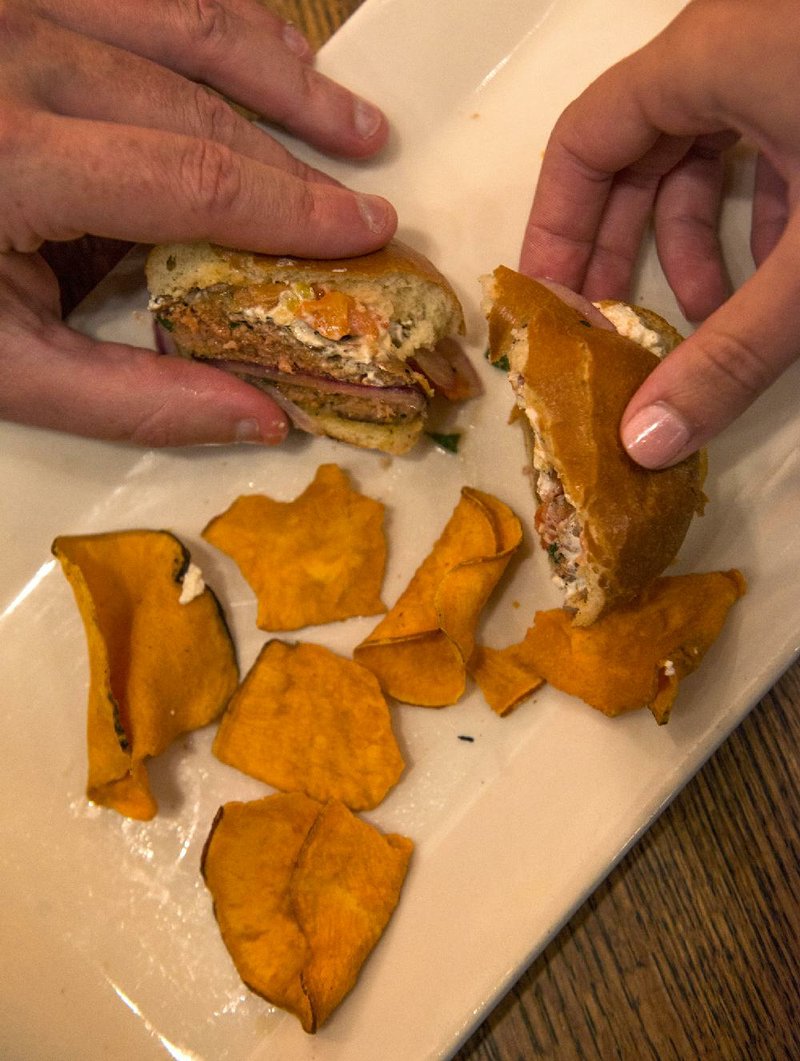WASHINGTON -- Sue Williams has a thing about her french fries. She wants them. All of them.
She's not stingy -- she'll happily order you all the french fries you want. Those will be your fries. These are hers.
"She has an expression: 'Touch my plate and feel my fork,'" says John Williams, her husband of 43 years, as the couple face each other over separate-but-equal orders of cheese fries recently at a Shake Shack. "It's funny, because she is a sharing person. But not when it comes to food."
"And I used to do fencing," says Sue, 63.
"I'm lucky to be alive," says John, 64.
These are hard times for the plate protectors among us. Driven by a generation that shares everything, dining out is becoming ever more a "mi french fry es su french fry" experience. Between Instagramming pictures of the meal when it's served and Yelping a review once they've finished, millennials are sharing more and more of the actual food.
They are helping to fuel a small-plate model that has spread from a few fancy Spanish eateries in big cities to Olive Gardens and TGI Fridays everywhere. At better restaurants, servers report coordinated ordering is nearly universal at tables of foodies who want to sample as much of the menu as possible. The group margarita with four straws is becoming a thing.
"Sharing has been one of the biggest trends in restaurants in recent years, and as millennials get into their 40s, they're not going to give up on it," says Annika Stensson, director of research communications at the National Restaurant Association, which recently released a survey marking the continuing encroachment of "grazing and small-plate sharing" over the traditional "Who-had-the-crab-cake?" model.
More than 60 percent of chefs surveyed by the group said plate-sharing remains a hot trend in the industry. The concept has made that list seven of the last nine years.
"It's moved from being a hot trend to a perennial favorite," Stensson says. "Even where they don't serve small plates, people are making a meal of appetizers for the purpose of sharing."
All of this is a little hard on people who, darn it, just want a bit of alone time with the food they actually ordered. For years, reluctant sharers only had to fend off the occasional fry filcher, or the girlfriend who virtuously passes on dessert -- and then plants her spoon in her companion's creme brulee. Now, whole menus are devoted to socialist portions.
Discussion boards, blogs and a bunch of table-side interviews reveal an underground of those clinging to the one-person, one-plate definition of dining.
"We don't even go to family-style or tapas places," says Ryan Phipps, a minister from Manhattan as he finished lunch with his wife and two young children at Washington's Bistrot Du Coin. "If I order something, then I want to eat it."
Every nonsharer's food thing is different. Williams, who was visiting from London, says she is a tad compulsive about eating her meal in a certain order, with the final bite of something always the most delicious.
"Please don't ask to eat the last bite of anything on my plate," she says. "That's the best one."
Phipps says he learned his defensive ways as an only child. "I always got the whole candy bar," he says. But others say it was growing up surrounded by predatory siblings that made them share-shy.
"I'm female and the youngest of a very large family (more than 5 sibs). I cannot stand sharing food off my plate," rants ColHeights, a chatter in a recent Carolyn Hax online discussion about food sharing for this story. "I really really despise the 'small plate' thing."
Renowned Washington chef Jose Andres says overcoming share-reluctance was one of the challenges of launching Jaleo, one of the restaurants that sparked the small-plate craze and his restaurant empire.
He told his servers to make a joke of it with the early skeptics. They encouraged diners who didn't want to join in the table-top bacchanal to clear a buffer zone around their plates and line it with a barricade of cutlery.
"It was the 20-inch rule," says Andres, who still cites his strategy in his talks about creative problem solving. "They could line up the forks and knives like weapons of mass destruction."
Restaurant workers say they see men and women alike wearing the icy glare of the nonsharer when invasive forks hover too close to their plates. But clear gender differences emerge when it comes to group behavior, they say.
Ashley Bethel, a manager at Busboys and Poets on 14th Street in Washington, described a common ritual at a table of female patrons. As they mull the entrees, a kind of communal order begins to emerge from the chaos. "'If you're getting the salmon, I'll get the pasta and we'll share,'" Bethel says.
But a table of men? "You'll have five guys eating five orders of salmon," she says.
Weekend on 08/06/2015
